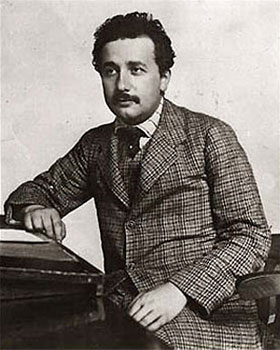Albert Einstein (1879-1955) was a German-born theoretical physicist and winner of the 1921 Nobel Prize in Physics.
Einstein influenced the beginning of the Manhattan Project. In collaboration with Leo Szilard, Einstein wrote a letter to President Roosevelt in 1939, warning of possible German nuclear weapons research and proposing that the United States begin its own research into atomic energy.
Einstein played no role in the Manhattan Project, having been denied a security clearance in July 1940 due to his pacifist tendencies. After World War II, he worked to control nuclear proliferation. He later regretted signing the letter to Roosevelt, saying in a Newsweek interview that “had I known that the Germans would not succeed in developing an atomic bomb, I would have done nothing.”
Scientific Contributions
In 1896, Einstein began studying to be a physics and mathematics teacher at the Swiss Federal Polytechnic School in Zurich. He graduated in 1901, the same year he became a citizen of Switzerland. He then worked at the Swiss Patent Office. Einstein earned his Ph.D from the University of Zurich during his “miracle year,” 1905, where he published four groundbreaking papers and won notice from academics.
Einstein’s special theory of relativity sought to harmonize the laws of mechanics and laws of the electromagnetic field. His investigations also helped establish the photon theory of light. Based on the special theory of relativity, he proposed a theory of gravitation, and in 1916 he published his paper on the general theory of relativity. In 1921, he was awarded the Nobel Prize in Physics “for his services to theoretical physics, and especially for his discovery of the law of the photoelectric effect.” For more on Einstein’s scientific contributions, visit the Nobel Prize website.
Later Years
As the Nazis rose to power in Germany, Einstein left for the United States and accepted a position at the Institute for Advanced Study in Princeton, NJ in 1933. Einstein became an American citizen in 1940. Einstein turned down an offer to serve as President of Israel, and was a co-founder of the Hebrew University of Jerusalem. He died on April 18, 1955.





